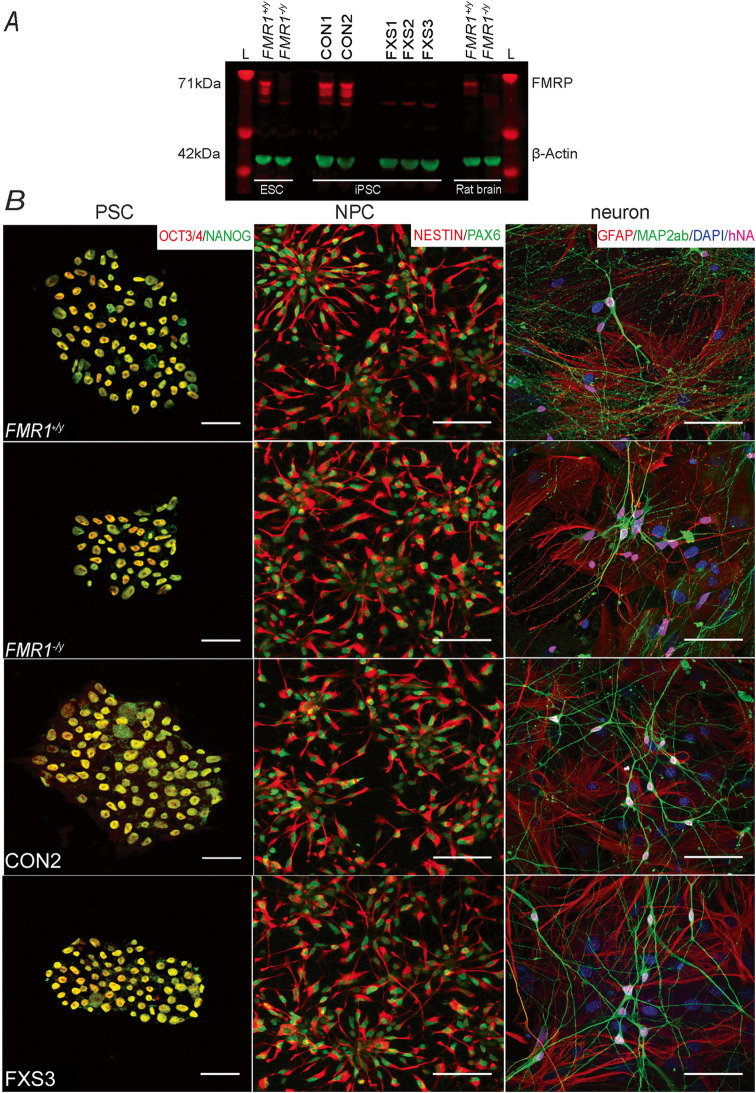Fig. 1.
Specification of neurons from human stem cell and pluripotent stem cell-derived neural progenitor cells. a LI-COR immunoblot image of FMRP obtained from each of the pluripotent stem cell lines examined. The image illustrates that FMR1+/y, CON1 and CON2 cell lines express FMRP (71 kDa), and FMR1−/y, FXS1, FXS2 and FXS3 lines lack FMRP. Rat brain lysate from Fmr+/y and Fmr1−/y animals were used as positive and negative controls respectively. b Left panel: representative confocal images of paraformaldehyde fixed hESC (FMR1+/y and FMR1−/y) and hiPSC (CON2 and FXS3) expressing the pluripotency markers, Nanog and Oct3/4. Scale bar = 50 μm. Middle panel: immunofluorescent staining of NPCs arranged as rosettes (derived from either hESC or hiPSC) for the progenitor markers Nestin and PAX6. Scale bar = 50 μm. Right panel: confocal images illustrating hESC- and hiPSC-derived cortical neurons expressing Map2ab/DAPI/hNA. The GFAP-positive cells are murine astrocytes (negative for human nuclei) with which hESC- and hiPSC-derived neurons were co-cultured. Scale bar = 50 μm. Abbreviations: hESC, human embryonic stem cells; hiPSC, human pluripotent stem cells; FMR1+/y, human embryonic stem cell line; FMR1−/y, gene-edited isogenic hESC pair lacking FMR1 gene; L, Ladder; CON1, CON2, control hiPSC line; FXS1, FXS2 and FXS3, hiPSC lines from fragile X syndrome patients

